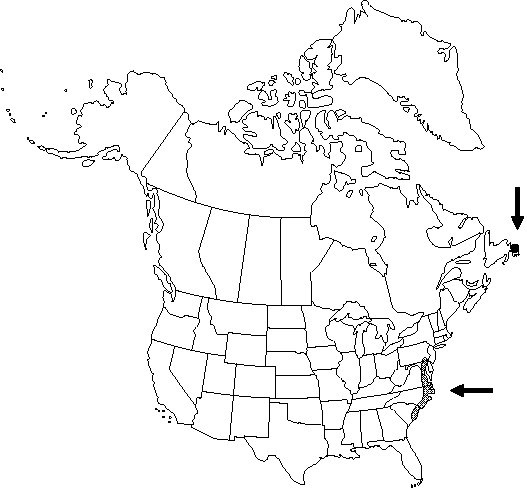Revision as of 15:54, 29 February 2024 by GeoffLevin (talk | contribs) (Fixed Nfld. and Labr. distribution to match map in printed version.)
Stems glabrous. Leaves all laminate, filiform-dissected leaves absent. Leaf blade reniform, 0.4-1 × 0.6-1.7 cm, margins shallowly crenate-lobulate, segments rounded. Flowers: receptacle glabrous; sepals recurved, 1.5-2 × 1-1.5 mm, glabrous; petals 5, 2-4 × 1-1.5 mm; style 0.1 mm. Fruiting pedicels recurved. Heads of achenes globose or depressed-globose, 3-4 × 3-4 mm; achenes 1.2-1.6 × 1-1.2 mm, glabrous; beak deciduous, sometimes leaving stub to 0.1 mm. 2n = 16 (Europe).
Phenology: Flowering spring–summer (Apr–Aug).
Habitat: Edges of lakes and ponds on the coastal plain
Elevation: 0-150 m
Distribution

Nfld. and Labr. (Nfld.), Md., N.C., Pa., S.C., Va., Europe.
Discussion
Selected References
None.
Lower Taxa
None.